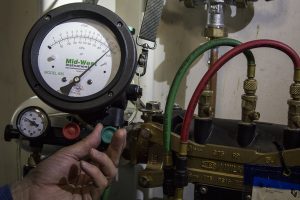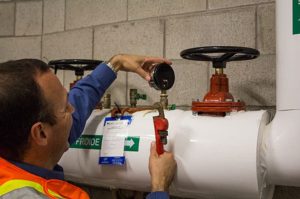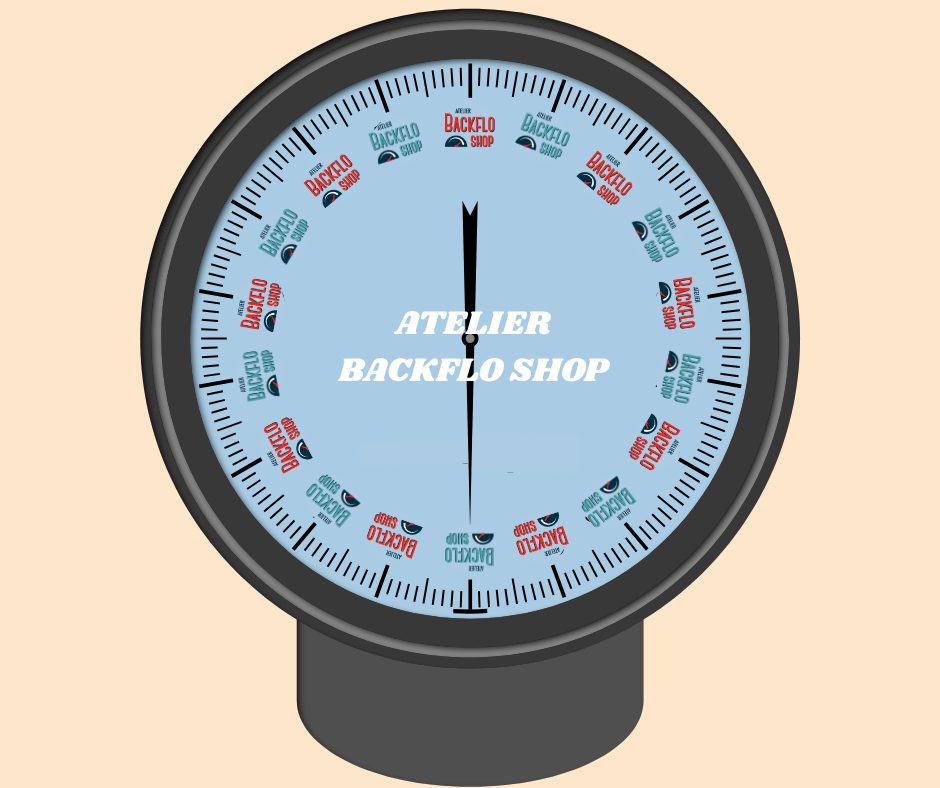In the drinking water industry, the role of the verifier is extremely important. They ensure that backflow prevention devices on the market are properly certified to ensure the preservation of drinking water.
But how is a backflow prevention device certified? Through tests conducted using a differential pressure gauge. In fact, the differential pressure gauge is the certifier’s essential tool. This device may require calibration if it is damaged or overused. Furthermore, the CSA B64.10 2023 standard stipulates that a differential pressure gauge must be calibrated annually.

How to tell if a differential pressure gauge is defective?
It can be difficult to recognize if a pressure gauge is faulty. However, certain deficiencies are easier to spot and are good indicators that the device may require calibration and verification:
- Leaks present on the device
- Inaccurate readings
- The needle does not return to its original position
To resolve these mechanical loosening and alignment, an adjustment is necessary.
The impact of using a defective differential pressure gauge
A defective pressure gauge can have serious consequences for the equipment. If a backflow prevention device is tested using an uncalibrated pressure gauge, the device’s certification is therefore invalid. As a result, the device no longer fulfills its purpose of protecting the water system. If this issue is repeated, the likelihood of contamination of the drinking water network only increases.
What can be done to remedy this situation?
A few precautions…
As a tester, here are some simple and free best practices to help keep your differential pressure gauge in good condition:
- After each use, purge the water from the gauge. Open all valves,
- Disconnect the hoses from your pressure gauge to reduce water buildup inside them,
- Always transport the pressure gauge in its case and avoid rough handling. Transport-related damage is one of the most common causes of defects,
- Do not leave the device in environments where the temperature may drop below 0°C, such as in a car. Water inside the pressure gauge can freeze and cause severe damage.
Some repair tips…
Other procedures are necessary to keep your pressure gauge working like new. The first is to bring it to a calibration laboratory. The Atelier Backflo Shop has the expertise and resources required to restore your pressure gauge back on track. These measures include:
- Cleaning the hoses and pressure gauge (rust, glass, buttons, etc).
- Performing leak tests. A leaking pressure gauge loses its accuracy.
- Calibrating the device through various testing methods.

In the future…
It is essential for verifiers to maintain their equipment in good condition. Doing so significantly reduces the risk of contaminating a drinking water network and ensures the long-term effectiveness of backflow prevention devices.
